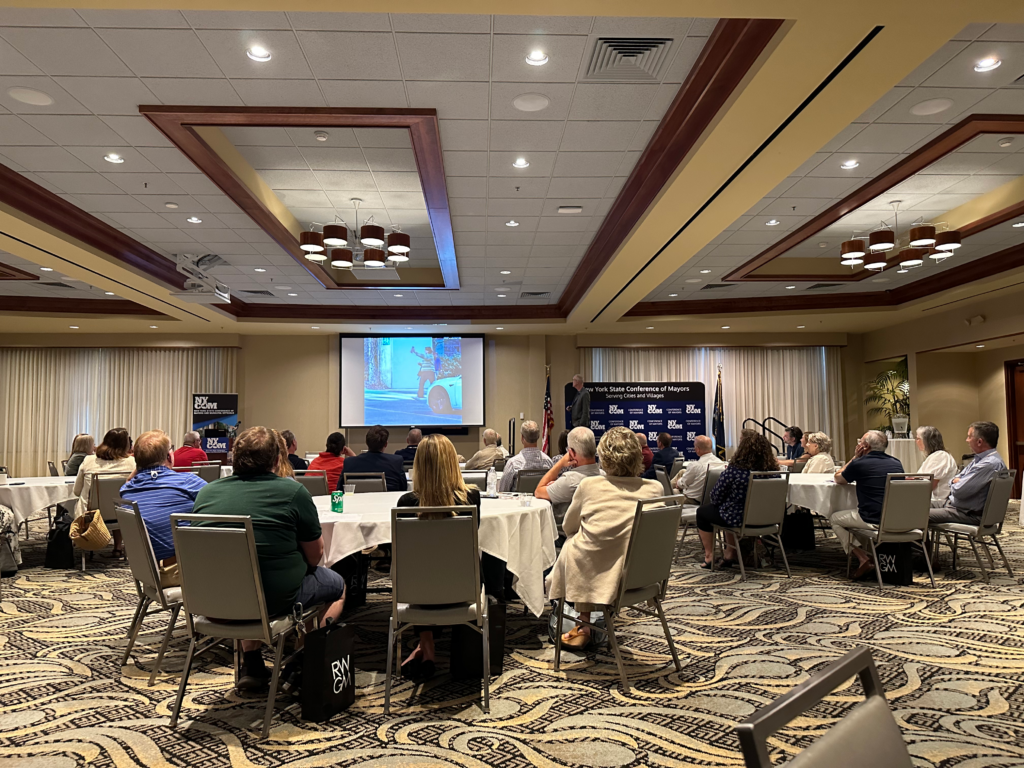NYCOM Downtown Revitalization Conference

I recently had the chance to attend the NYCOM’s (New York State Conference of Mayors) Community Revitalization Conference in Oswego. The conference was very exciting – and not just because of the tornado warning! A huge amount of information was shared, and the general tone from attendees was of immense optimism about revitalizing New York’s downtown communities.
The two main tracks of the conference were Main Street and Vacant & Abandoned Properties. During the conference I attended events as part of each track. I’ll share some of my insights below. I’ll conclude with an overview of the conference’s truly impressive keynote speaker, Jeff Speck, author of the 2012 book Walkable City.
Vacant & Abandoned Properties – One of the great things about NYCOM is the level of specificity that some of their sessions. To this end, the vacant and abandoned properties track was chock-full of specific steps that municipal leaders can take to revitalize their communities. For example, maintaining a property management task force, implementing Article 13 of the New York State Public Health Law, and utilizing alternatives to foreclosures.
The overall conversation around brownfields was fascinating. These are blighted properties that range from eyesores that represent a real nuisance, to vacant properties that drift into the background and represent missed economic development opportunities. The good news is that these properties may be eligible for significant grant funding. The work that may be required to develop these properties can involve zoning changes, public-private partnerships, market analysis, and more. The process is long and involved, but communities dedicated to bringing these properties back into public use can receive significant support from the state to do so.
Main Streets – These sessions were truly inspirational. We got to hear from Syracuse, New York who successfully met their goal of increasing their downtown residential population. They were able to do this by developing housing in vacant and underutilized upper floors in their downtown and by supporting cultural anchors to increase tourism.
Some of the lessons Syracuse learned from this effort:
- Transformative projects can be complex
- Resources need to match the scale of the project, with some requiring much more to proceed than others
- Funding sources should be engaged in an ongoing dialogue about the projects that need support
Jeff Speck – Author of Walkable City and co-author of Suburban Nation, Jeff Speck is well-known in the urban planning community. His hypothesis, a well supported one, is that walkability is a determination of a city’s success.

His presentation highlighted the ways that walkability impacts economic development, with more commerce taking place in walkable communities. He also covered the environmental impact of walkability. He pointed out that New York City, with more subway stops than all other cities in the country combined, is also the greenest community in country on a per capita basis. With a recent increase in pedestrian deaths since 2009, the need to return to walkability is more important than ever, and to this end Speck’s presentation was a breath of fresh air.
Overall the NYCOM Community Revitalization conference was a really special event. It also coincided with the New York Land Bank Association Conference. This meant that municipal leaders and land-bank board members and professionals were able to rub shoulders and join each other in reenvisioning the future of communities throughout New York State. Thank you once again to NYCOM for putting on a great event!

